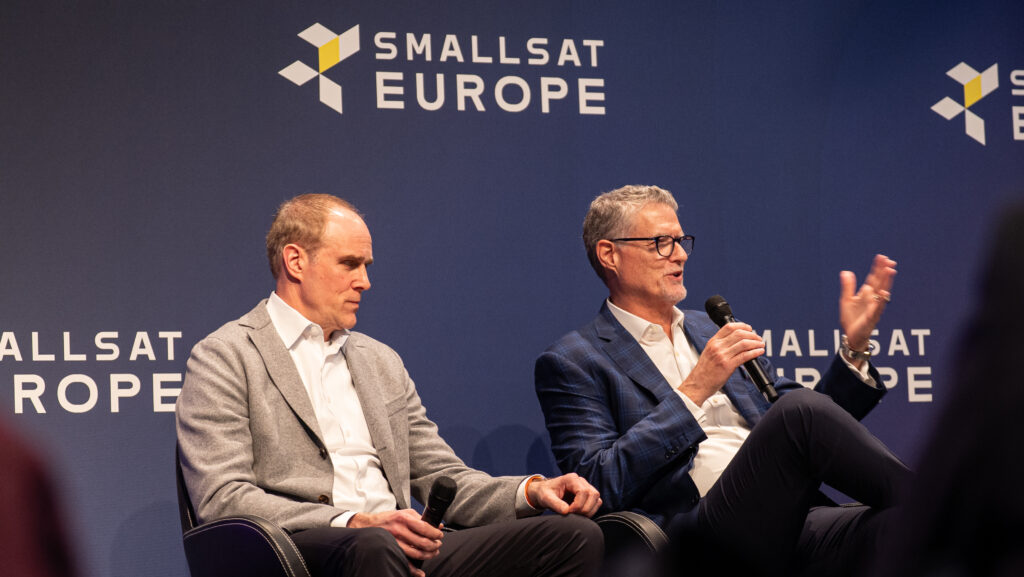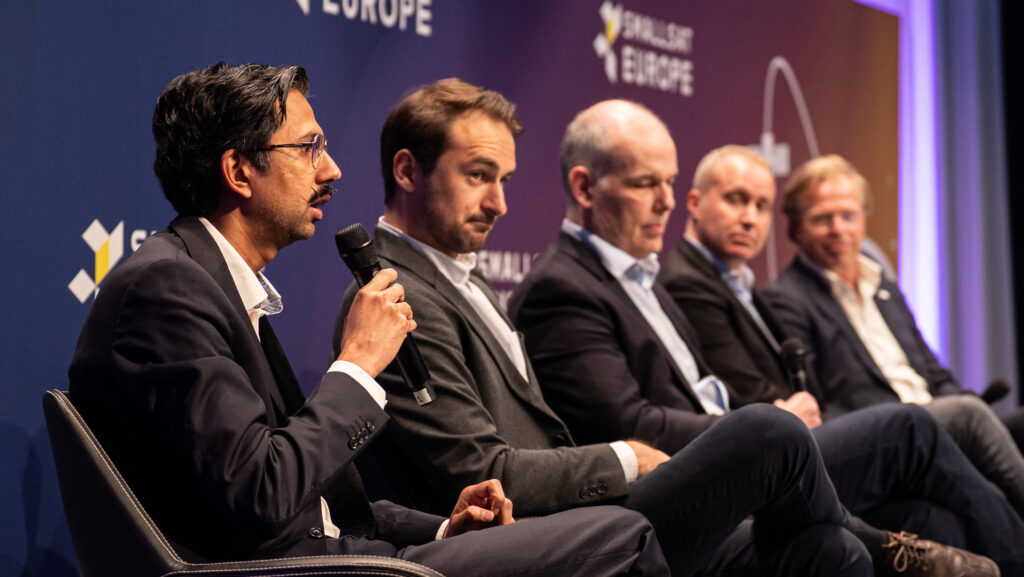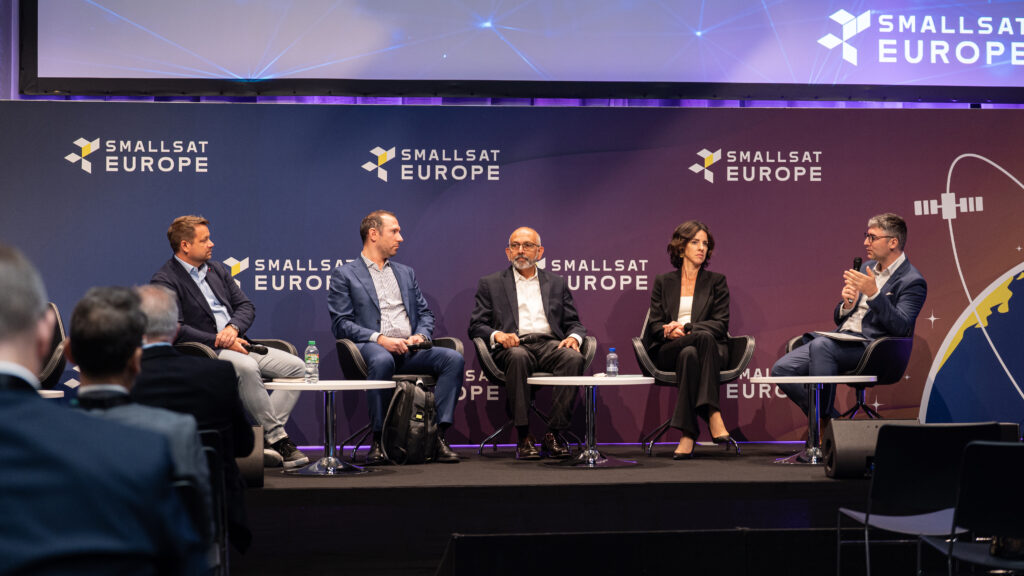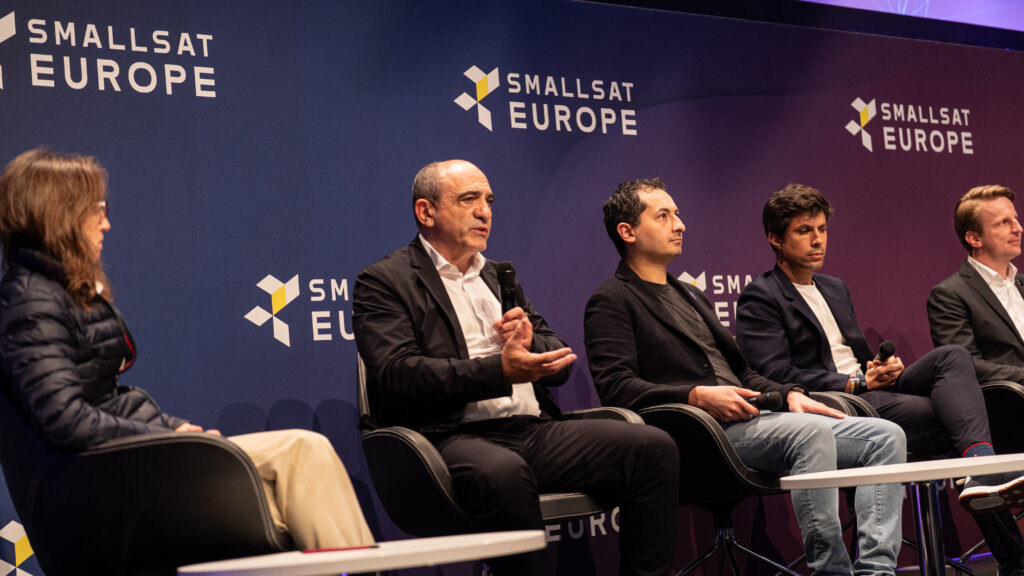By Chris Forrester
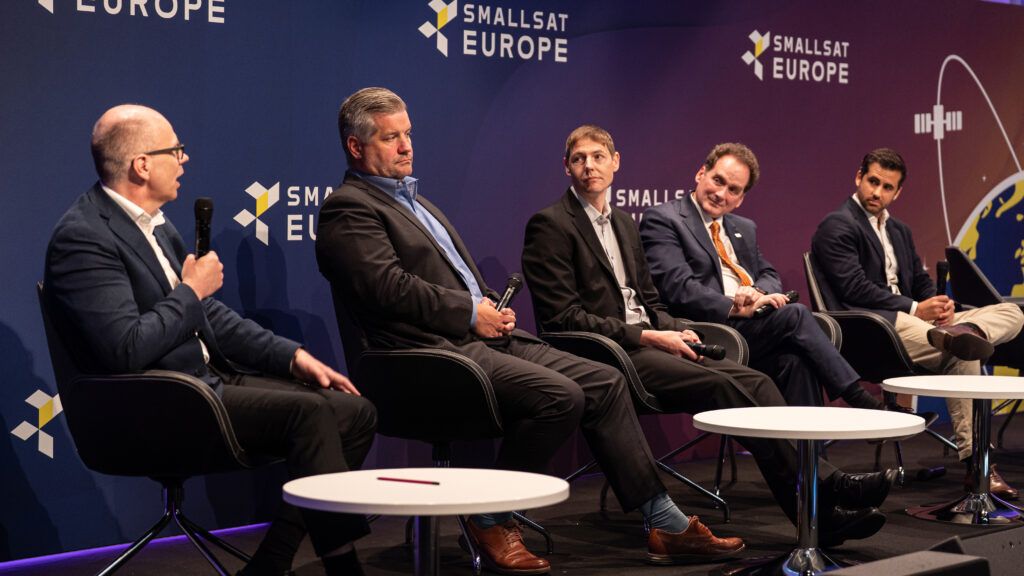
Noel Rimalovski (Managing Director, GH Partners) moderated this key panel at the SmallSat Europe conference held at the RAI Congress Centre in Amsterdam on May 28. With his panel he examined the role of Ground Segment and the position of standards and innovation in the sector. He opened by saying that once it was geostationary operators who tended to have their own dedicated systems.
Harek Gamst (Director Sales and Marketing, Kongsberg Defence & Aerospace AS). Kongsberg Defence & Aerospace is one of three business units of Kongsberg Gruppen of Norway and a supplier of defence and space related systems and products. In some cases, he said, politics sometimes comes into play as regards the operating ground system and whether it is owned privately or by government.
Ryan Conroy (VP of Business Development, Elve Speed). Elve is pioneering advancements in millimeter wave amplifiers to transform high-bandwidth communications, sensing, and other advanced applications. Conroy said that the recent ‘tariff’ problems out of the Oval Office had not impacted business.
Paul Gouws (CTO, ETL Systems Ltd). ETL Systems designs and manufactures RF equipment for critical satellite communications, and trusted by the top 20 satellite operators and teleports. He said the growth drivers were the demand for data, and we anticipate new entrants using new Q and V frequency bands. IRIS2 is also on our radar. We try and operate agnostically and thus supporting different waveforms and moving away from very specific hardware.
Ron Faith (President & CEO, RBC Signals). RBC Signals offer simplified communications and monitoring in VHF, UHF, L, S, C, X, Ku, Ka and optical bands. He said there was today increased spending by governments, but there was also interest from independent nations who wanted their own systems in place. There was also growing interest from new applications whether Earth observation, for example, and where the operator needed their own ground service. However, there were also instances where some operators were exiting how they structured. Eutelsat’s recent move was an indicator of this trend, and which also allowed them to raise capital.
Ludovic Court (Head of Sales & Marketing, Leaf Space). Milan-based Leaf Space is a preferred ground segment service provider for both government and commercial markets. He said that customers were increasingly leaning towards owning their own services, but others were happy to leave the ground segment to independent operators especially when you consider the regulations and licensing.
The panel was enthusiastic about standards, and in a more demanding world there was a need for standards in achieving higher throughput. Standards were useful in limiting the number of choices a client had to make.
However, the panel was somewhat circumspect about the use of laser/optical transmitters from satellite to Earth, given the weather challenges, clouds and the costs of ground equipment and the need to back-up optical with RF transmission.



